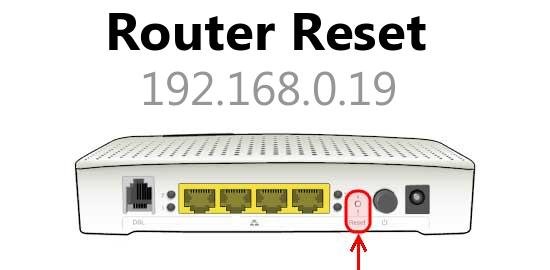It seems like you are referring to a local network address, “https //192.168.0.19:8089” which is typically used to access a device, service, or application hosted within a private network, such as a home or office network. This IP address format indicates a private, non-routable address, usually inaccessible from the public internet. It is often used for services like local web servers, NAS (Network Attached Storage) devices, or other self-hosted platforms.
Since this address refers to a local network, I cannot directly access or retrieve information from it, as it is likely specific to your environment. However, if you’re working with this type of setup and need guidance on how to build a local web service, manage devices in your local network, or troubleshoot connectivity issues, I can offer relevant advice or tutorials.
Article Topic: Setting Up and Managing a Local Web Server on Your Network
In this article, we’ll walk through setting up and managing a local web server using an address like “192.168.0.19:8089”. Local web servers are excellent for testing websites, hosting local applications, and managing media or files across a private network. Here’s a guide on how to set it up and maximize its potential.
1. Understanding Local Web Servers
A local web server operates within your local network (LAN), meaning it’s not accessible via the broader internet. It’s often used for testing, development, or internal services that don’t need exposure to the public. Local web servers can be set up on a variety of devices, including:
- A dedicated desktop or server
- A Raspberry Pi
- Network Attached Storage (NAS) systems
- Virtual machines
Some common tools for setting up local web servers include:
- Apache: One of the most popular web server software options.
- NGINX: Known for high performance, used as a web server or reverse proxy.
- Node.js: JavaScript-based server platform, great for lightweight and flexible projects.
Once installed, these tools allow you to host websites or applications that can be accessed within the local network.
2. Choosing the Right Platform
For setting up a local server, the platform you choose depends on your requirements:
- Windows: You can use XAMPP (Apache + MariaDB + PHP + Perl) or WAMP.
- macOS: MAMP is a good option, though macOS also has a built-in Apache server.
- Linux: Many distributions come with Apache or NGINX pre-installed, or they can be added easily via terminal commands.
If you’re setting up the server on a low-cost device like a Raspberry Pi, Raspbian (a Linux-based OS) offers a simple way to configure Apache or NGINX. Additionally, there are solutions like Docker to manage your services in containers, which adds portability and ease of deployment.
3. Port Management (Understanding 8089)
The number “8089” in your URL (192.168.0.19:8089) signifies a port. In networking, a port is a virtual point where network connections start and end. Commonly, web servers use port 80 (HTTP) or 443 (HTTPS), but other services can use alternate ports, like 8089.
To change or define a port:
- In Apache, you can modify the port settings in the
httpd.conffile. - For NGINX, the
nginx.conffile controls the port configuration.
Ensure that the port is open and accessible through your router’s firewall settings if you’re having trouble connecting to it. You may also need to adjust the firewall on your computer or device to allow traffic through this port.
4. Accessing the Local Server
Once the server is up and running, any device connected to the same network can access it by typing the IP address followed by the port number into their browser.
5. Security Considerations
While local servers aren’t exposed to the public internet, security still matters. Consider the following precautions:
- Authentication: Restrict access to the server by setting up user authentication, especially if sensitive data is involved.
- Firewall Rules: Configure your router or local firewall to block unnecessary traffic or restrict access to certain devices.
- SSL Certificates: Although it’s on a local network, you can still use self-signed SSL certificates to ensure encrypted connections over HTTPS.
- Regular Updates: Keep your server software (e.g., Apache, NGINX, or Node.js) updated to avoid vulnerabilities.
6. Use Cases for Local Web Servers
Setting up a local server is useful in various scenarios:
- Website Development: Developers can host websites locally to test changes before deploying them publicly.
- File Storage and Sharing: Set up a media server or file-sharing hub for internal use, such as with Nextcloud or Plex.
- Smart Home Hub: Manage IoT devices with platforms like Home Assistant hosted on a local server.
7. Monitoring and Managing Your Server
To ensure your local web server runs smoothly, implement basic monitoring:
- Log Files: Review server logs (e.g., Apache logs) to monitor access, errors, and performance.
- Resource Monitoring: Tools like htop (Linux) or Task Manager (Windows) help track CPU and memory usage.
- Backups: Regularly back up configurations and data, especially if using the server for critical tasks.
Additionally, setting up SSH (Secure Shell) access allows you to manage the server remotely from within the network, making it easier to troubleshoot or deploy updates.
Conclusion
Setting up a local web server at an address like 192.168.0.19:8089 gives you immense control over your environment, allowing for testing, development, and internal services. By leveraging tools like Apache, NGINX, or Node.js, you can host your own web applications, improve home automation, or set up internal media servers. With proper port management, security protocols, and careful monitoring, your local server will function as a reliable tool within your network.
If you need specific advice on how to configure the server on your network or run into issues, feel free to reach out or look for additional resources. Happy hosting!
